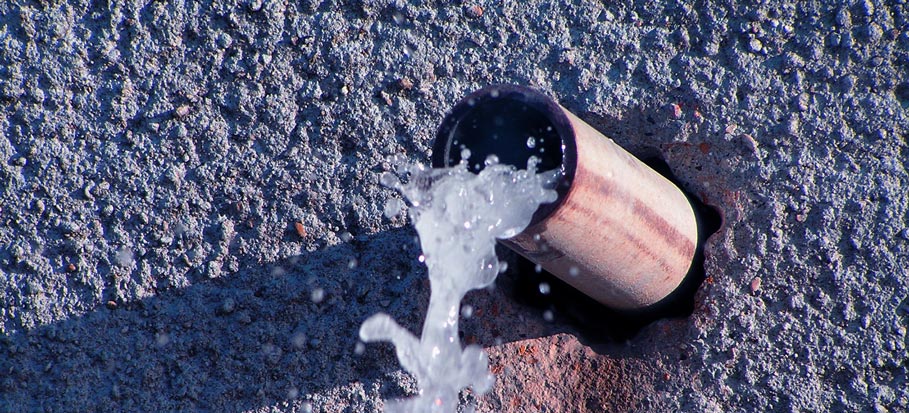6 Ways to Find Concealed Water Leaks in Your Home
6 Ways to Find Concealed Water Leaks in Your Home
Blog Article
Presented here down the page you can get lots of professional additional info when it comes to Hacks to detect leaks.

Early discovery of leaking water lines can mitigate a prospective calamity. Some small water leakages may not be visible.
1. Analyze the Water Meter
Every residence has a water meter. Checking it is a proven way that aids you uncover leaks. For beginners, switch off all the water sources. Make certain nobody will certainly purge, use the tap, shower, run the cleaning device or dish washer. From there, go to the meter as well as watch if it will certainly change. Given that nobody is utilizing it, there need to be no movements. That indicates a fast-moving leak if it moves. Similarly, if you spot no changes, wait a hr or more and examine back again. This means you might have a slow leak that could even be underground.
2. Check Water Intake
Assess your water expenses and also track your water usage. As the one paying it, you must notice if there are any kind of discrepancies. If you detect sudden changes, despite your usage coinciding, it implies that you have leakages in your plumbing system. Bear in mind, your water costs should drop under the same array monthly. An unexpected spike in your costs shows a fast-moving leakage.
Meanwhile, a constant boost each month, even with the same practices, reveals you have a sluggish leakage that's also gradually intensifying. Call a plumber to extensively inspect your residential property, particularly if you feel a warm location on your floor with piping underneath.
3. Do a Food Coloring Examination
When it comes to water usage, 30% comes from commodes. If the color in some way infiltrates your bowl throughout that time without flushing, there's a leak between the container and dish.
4. Asses Outside Lines
Do not neglect to check your outdoor water lines as well. Must water permeate out of the connection, you have a loose rubber gasket. One tiny leak can squander bunches of water and spike your water bill.
5. Examine as well as Analyze the Circumstance
House owners must make it a routine to check under the sink counters and also even inside cabinets for any type of bad odor or mold and mildew development. These two warnings suggest a leakage so timely focus is called for. Doing regular evaluations, even bi-annually, can conserve you from a major problem.
Examine for discolorations and also deteriorating as many devices and pipelines have a life expectations. If you believe leaking water lines in your plumbing system, do not wait for it to intensify.
Early detection of dripping water lines can reduce a prospective catastrophe. Some tiny water leakages might not be visible. Checking it is a proven method that aids you uncover leaks. One small leak can lose bunches of water and also spike your water costs.
If you presume leaking water lines in your plumbing system, do not wait for it to intensify.
WARNING SIGNS OF WATER LEAKAGE BEHIND THE WALL
PERSISTENT MUSTY ODORS
As water slowly drips from a leaky pipe inside the wall, flooring and sheetrock stay damp and develop an odor similar to wet cardboard. It generates a musty smell that can help you find hidden leaks.
MOLD IN UNUSUAL AREAS
Mold usually grows in wet areas like kitchens, baths and laundry rooms. If you spot the stuff on walls or baseboards in other rooms of the house, it’s a good indicator of undetected water leaks.
STAINS THAT GROW
When mold thrives around a leaky pipe, it sometimes takes hold on the inside surface of the affected wall. A growing stain on otherwise clean sheetrock is often your sign of a hidden plumbing problem.
PEELING OR BUBBLING WALLPAPER / PAINT
This clue is easy to miss in rooms that don’t get much use. When you see wallpaper separating along seams or paint bubbling or flaking off the wall, blame sheetrock that stays wet because of an undetected leak.
BUCKLED CEILINGS AND STAINED FLOORS
If ceilings or floors in bathrooms, kitchens or laundry areas develop structural problems, don’t rule out constant damp inside the walls. Wet sheetrock can affect adjacent framing, flooring and ceilings.
https://www.servicemasterbyzaba.com/blog/how-to-detect-water-leakage-in-walls/

I came across that piece about Top leak detection hacks when doing a lookup on the search engines. Don't hesitate to take the time to distribute this write-up if you enjoyed reading it. Thank you for your time. Come back soon.
Report this page